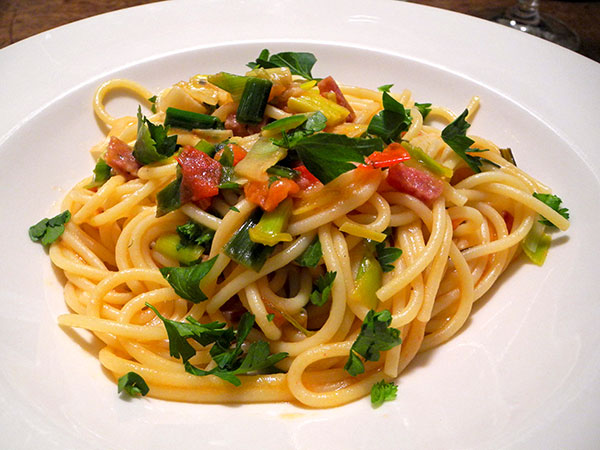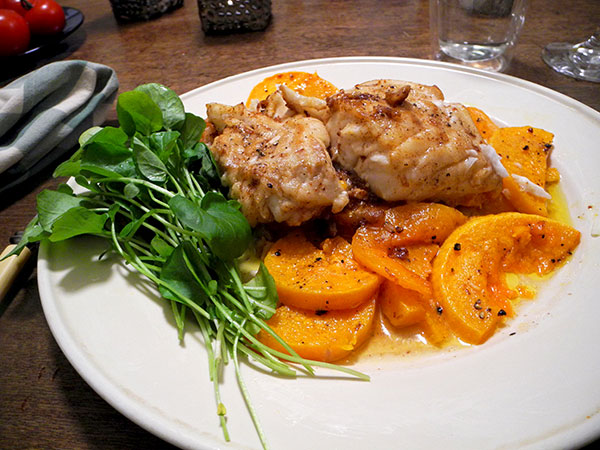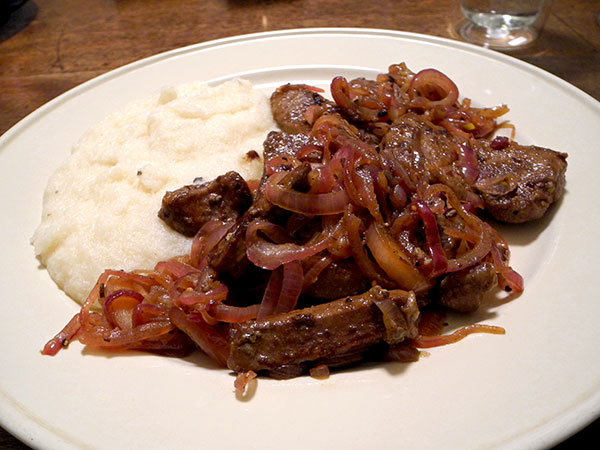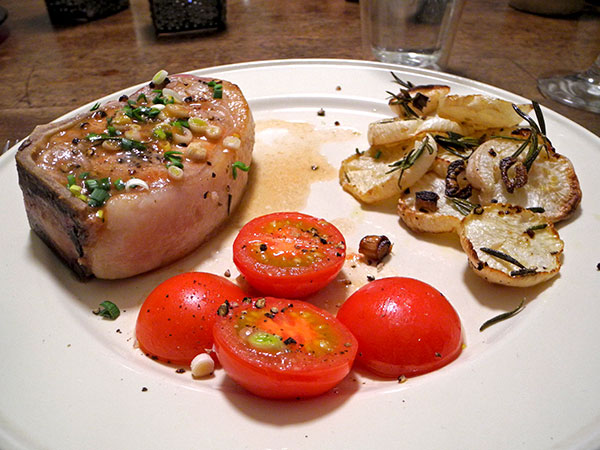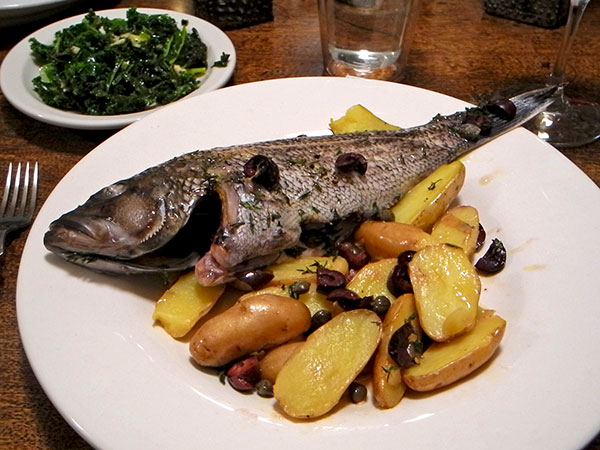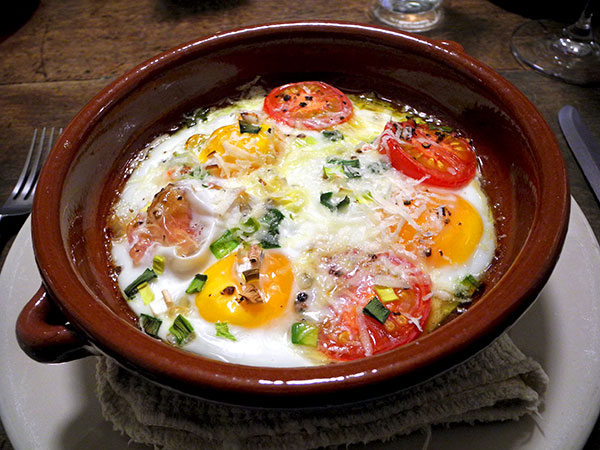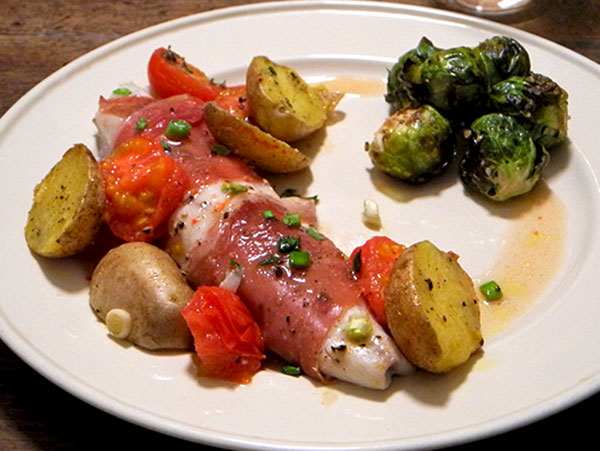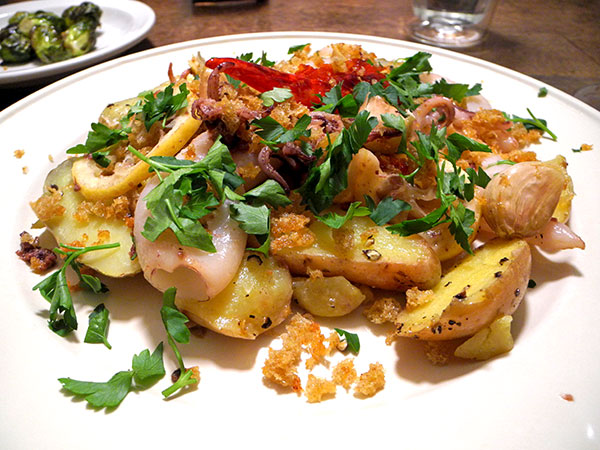I used to cook pasta dishes far more often than I do now. In fact I occasionally thought that we might be eating too much pasta, even when I had persuaded myself at the same time that might not even be possible (think Sophia Loren, as in, “Everything you see I owe to spaghetti”). I cannot account for its more rare appearance on both our table and this blog in recent years, except that I think I’ve been hugely distracted by the diversity of the bounty available at our local farmers’ market, the incredible Union Square Greenmarket.
This particular meal managed to bridge both impulses, or fancies, since it includes both some rather precious, very-late-season leeks I had picked up in Union Square on Wednesday, and an eventuation of a slightly-modified version of a Mark Bittman pasta recipe I hadn’t even looked at in almost ten years.
- two lightly-smashed Rocambole garlic cloves from Keith’s Farm and two dried chiles from Buon Italia, sautéed in olive oil until the garlic browns, the chiles then removed, finely-chopped Jacüterie Alpine Cervelat, purchased late last fall at the Cold Spring farmers’ market, added to the pan and stirred for a minute, then four smallish leeks from Rogowski Farm which had been trimmed, split, washed, and sliced, added to the garlic oil and stirred until they wilt, freshly-ground black pepper and two minced Maine Backyard Farms mid-size tomatoes from Eataly added to the pan and cooked, stirring occasionally, until the leeks appeared to begin to brown, the sauce tossed with about twelve ounces of Rustichella d’Abruzzo spaghetti cooked al dente , more olive oil, some reserved pasta water, and chopped parsley from Manhattan Fruit Exchange
- the wine was an Italian red, Piedmont Wine Project Gambai Rosso 2013
- the music was Dvořák’s Symphony No. 1 (and I had thought he couldn’t count below 6), and Fred Lerdahl‘s wonderful String Quartet No. 1
